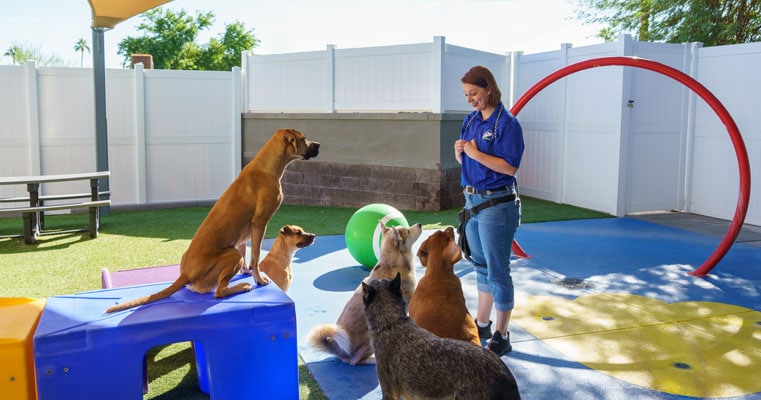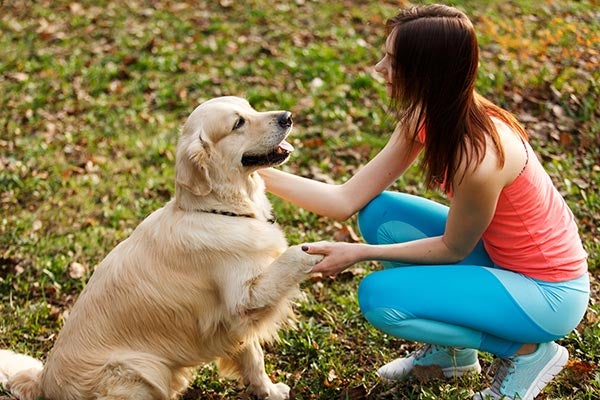Just how to Choose the Right Technique for Effective Dog Training
Just how to Choose the Right Technique for Effective Dog Training
Blog Article
Essential Tips for Effective Dog Training: A Guide for Family Pet Owners
Reliable pet training is a multifaceted process that calls for a critical approach customized to both the pet dog's personality and the owner's objectives. Trick elements such as developing consistent commands, utilizing positive support, and assisting in very early socialization play vital duties in cultivating a well-adjusted canine friend. Nevertheless, several pet dog owners encounter difficulties that can prevent progress, causing disappointment and unpredictability. Understanding just how to navigate these challenges can considerably enhance the training experience, inevitably transforming the relationship between proprietor and dog. What are the crucial techniques that can be utilized to ensure success in this undertaking?
Recognizing Dog Actions
Recognizing dog actions is important for effective training and cultivating an unified connection in between dogs and their proprietors. Pet dogs communicate mostly through body language, vocalizations, and actions, making it essential for owners to interpret these signals precisely. Identifying a pet's posture, tail position, and ear orientation can supply understandings right into its mood. A wagging tail does not constantly indicate happiness; it can additionally signal exhilaration or anxiety.

Socialization plays a substantial duty in pet habits; exposure to numerous atmospheres, people, and other pets can dramatically influence a pet dog's temperament. Variables such as type qualities and private temperament should guide training techniques, as some breeds might have details behavior qualities that require customized approaches. By understanding these aspects, proprietors can develop a supportive environment that urges positive behavior, leading to effective training results and a deeper bond with their pet dogs.
Developing Constant Commands
Effective interaction with your dog begins with developing consistent commands. This foundational aspect of training is crucial for promoting understanding between you and your family pet. Uniformity in the commands you make use of makes certain that your pet dog can reliably connect certain words or expressions with the preferred behaviors.
When choosing commands, choose clear, distinctive words that are simple to differentiate and claim from one an additional. Prevent utilizing similar-sounding commands that may confuse your pet. As an example, utilizing "sit" and "remain" is proper, but "sit" and "hit" could cause misunderstandings.
Furthermore, preserve the same tone and volume for every command. Pets are sensitive to singing cues, so varying your tone can develop complication.
It is similarly vital to guarantee that all member of the family get on the same web page relating to the commands utilized. A united front in command use will certainly prevent combined signals and strengthen the knowing procedure.
Positive Support Strategies
The power of favorable support in pet dog training exists in its capacity to motivate wanted actions with rewards and appreciation. This method is grounded in the concept that habits complied with by positive end results are much more likely to be repeated. By incorporating favorable support right into your training program, you can effectively form your dog's habits in a constructive fashion.
To execute positive reinforcement, it's necessary to recognize what encourages your canine, whether it be treats, toys, or spoken appreciation. When your pet does a preferred activity, such as resting on command, right away reward them with a reward or love. This association in between the command and the favorable result enhances their understanding.
It's critical to timing the rewards appropriately; delivering the reinforcement within seconds of the preferred behavior assists your dog make the link (dog training). In addition, consistency is essential-- make certain that all relative use the very same commands and incentive systems to prevent confusion

Gradually, you can decrease the frequency of deals with as your pet discovers the behavior, transitioning to applaud or recurring rewards. This approach not just cultivates a solid bond between you and your pet but additionally promotes a favorable discovering environment, making training an enjoyable experience for both.
Socialization and Interaction
Consistently exposing your pet dog to a range of settings, individuals, and other pets is critical for their social development. Socialization should begin early, preferably during the crucial window of 3 to 14 weeks, when young puppies are most receptive to brand-new experiences. Older pets can additionally benefit from continuous socializing efforts.
Present your dog to various settings, such as parks, pet-friendly shops, and urban locations. This direct exposure aids them adapt to different stimulations, minimizing anxiety and fear reactions. Urge positive communications with various other dogs and people, ensuring that these experiences are secure and regulated to foster self-confidence.
Use organized playdates with well-mannered canines, as this can enhance your pet dog's social abilities and instruct them ideal behavior. Obedience classes and training sessions additionally offer excellent opportunities for pop over to these guys socialization, enabling your dog to connect with others in a monitored environment.
Display your canine's body movement during communications, as this will certainly aid you gauge their convenience level. Slowly increase direct exposure to more challenging circumstances while guaranteeing that each experience is positive. A well-socialized canine is Get More Information a lot more likely to exhibit balanced behavior, making them a pleasure to have in any setting.
Dealing With Usual Training Challenges
Every dog owner will certainly encounter training challenges at some time, despite their pet dog's age or socializing level. Determining common problems such as stubbornness, interruptions, and fearfulness can help in creating effective strategies for improvement.

Slowly introduce diversions as the dog ends up being much more competent in commands. Short, constant training sessions are additionally reliable in keeping attention.
Fearfulness can hinder a pet's discovering procedure. Gradual desensitization to the source of worry, coupled with favorable support, can assist ease anxiousness. Persistence is vital; never require a canine into a circumstance that causes distress, as this might worsen the problem.
Inevitably, understanding and addressing these usual obstacles with a structured approach will certainly promote an extra productive training experience, reinforcing the bond in between pet dog and proprietor while advertising reliable understanding.
Conclusion
In summary, effective canine training depends on an extensive understanding of canine behavior, the facility of regular commands, learn this here now and the application of positive reinforcement strategies. Socializing plays a critical duty in creating well-adjusted pets, while resolving typical training obstacles calls for perseverance and flexibility. By implementing these important methods, pet dog proprietors can foster a strong bond with their canines and advertise preferable actions, inevitably resulting in an unified connection between people and their canine companions.
Comprehending canine behavior is crucial for reliable training and promoting an unified relationship between canines and their proprietors.Socialization plays a significant function in pet habits; direct exposure to various atmospheres, individuals, and other pets can considerably influence a canine's character.The power of favorable support in canine training exists in its capability to motivate wanted behaviors with incentives and praise. By integrating favorable reinforcement right into your training regimen, you can efficiently shape your pet dog's habits in a positive manner.
In summary, effective dog training counts on a thorough understanding of canine habits, the facility of regular commands, and the application of favorable support strategies.
Report this page